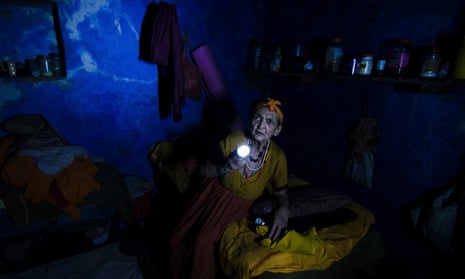A small group of privileged men based in Europe and the US preside over a global health system which is 70% male, according to new research.
The Global Health 50/50 report, published on Monday by University College London’s Institute of Global Health, warns it could take 54 years until the world’s major health organisations have equality in their leadership.
Although women make up 70% of workers in the global health sector, only 5% of leadership positions are occupied by women from low- and middle-income countries, said researchers.
Power is concentrated in rich countries, where 85% of global health organisations have their headquarters, according to the report. Most of the leaders were nationals of these countries or had studied in their universities.
“It’s a stagnant and stagnating system,” said Professor Sarah Hawkes, co-founder of the initiative, which reviewed the performance of 200 organisations working in health. “It’s not kept pace with the changing nature of disease and it’s also essentially failing to take gender into account.”
The report said the current global health system has its roots in colonial-era structures that were often focused on specific diseases and preventing their spread to Europe.
Dr Anuj Kapilashrami, a senior lecturer in global health at Queen Mary University of London, said these structures mean much of the health sector focuses on select diseases rather than the structural issues that lead to disease.
“We need radical change in the ways aid gets dispersed, and structural changes,” she said.
There needed to be a greater focus on poverty, migration and food security, rather than measuring aid responses for communicable diseases, Kapilashrami explained.
“Instead of just looking for silver bullets, it would be looking at causes of causes, the issues that push people into disease,” she said.
Hakwes said the lack of evolution in leadership was reflected in global health policy agendas, which often failed to keep pace with changes around the world.
She said that policy in the 20th century was often focused on population control. While it developed a specific focus on women’s health, the general understanding of gender was limited, she argued.
“A lot of the programmes we’ve looked at, they’re not looking at women’s health in general, they’re looking at women’s reproduction,” said Hawkes.
She said programmes failed to take account of other health issues women faced, especially as more women worldwide moved into urban environments and workplaces, experiencing major changes in their lifestyles as a result.
The report noted an increase in organisations announcing plans to address their shortcomings, with two-thirds now having gender policies in place, but said only 44% actually had measures to encourage diversity and inclusion.
“I’m quite frustrated by statements and by initiatives made for marketing purposes and political statements that don’t make a big difference,” said Professor Devi Sridhar, director of the global health governance programme based at the University of Edinburgh.
She said that, with young women from around the world increasingly receiving support from her own and other institutes, she was optimistic that the sector would change and that the next generation would secure leadership positions in the next decade.
“Don’t say to me there’s not good women, there are plenty. But what happens when I go to big meets with big organisations and big pharma heads is, I don’t see that reflected,” she said.
“There is a lot of talk and not much evidence that at the highest levels things have shifted. But I see a lot of hope in young women.”
Amie Batson, executive director of WomenLiftHealth, which supports women in leadership roles in the sector, said that despite persisting problems she believed there was increasing awareness about the need for change.
“This is the start of the movement, not the end … there’s tremendous energy and excitement that we can move this on that there wasn’t five years ago.”
